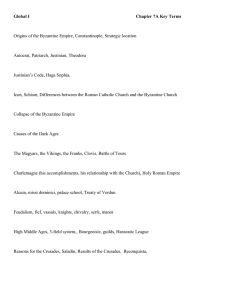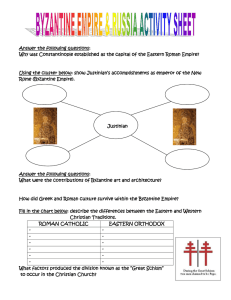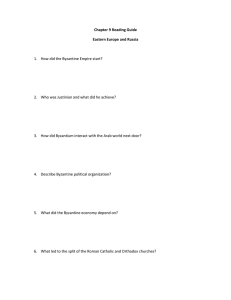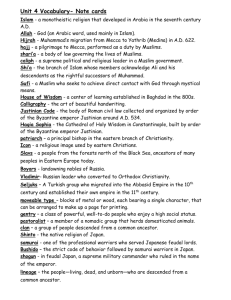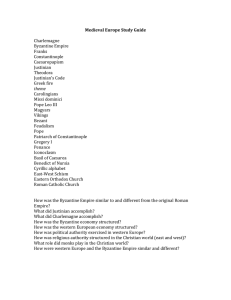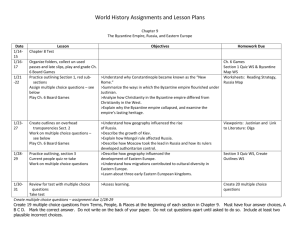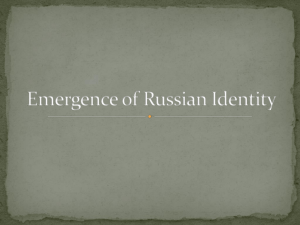Chapter 9 Civilization in Eastern Europe: Byzantium and Orthodox Europe
advertisement
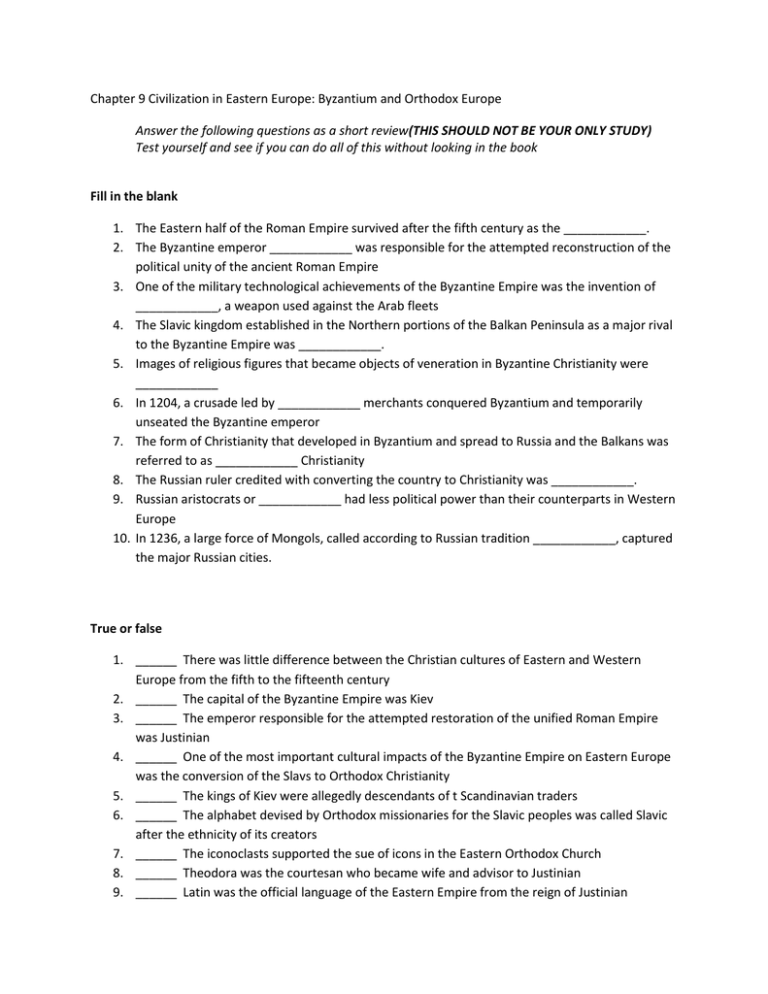
Chapter 9 Civilization in Eastern Europe: Byzantium and Orthodox Europe Answer the following questions as a short review(THIS SHOULD NOT BE YOUR ONLY STUDY) Test yourself and see if you can do all of this without looking in the book Fill in the blank 1. The Eastern half of the Roman Empire survived after the fifth century as the ____________. 2. The Byzantine emperor ____________ was responsible for the attempted reconstruction of the political unity of the ancient Roman Empire 3. One of the military technological achievements of the Byzantine Empire was the invention of ____________, a weapon used against the Arab fleets 4. The Slavic kingdom established in the Northern portions of the Balkan Peninsula as a major rival to the Byzantine Empire was ____________. 5. Images of religious figures that became objects of veneration in Byzantine Christianity were ____________ 6. In 1204, a crusade led by ____________ merchants conquered Byzantium and temporarily unseated the Byzantine emperor 7. The form of Christianity that developed in Byzantium and spread to Russia and the Balkans was referred to as ____________ Christianity 8. The Russian ruler credited with converting the country to Christianity was ____________. 9. Russian aristocrats or ____________ had less political power than their counterparts in Western Europe 10. In 1236, a large force of Mongols, called according to Russian tradition ____________, captured the major Russian cities. True or false 1. ______ There was little difference between the Christian cultures of Eastern and Western Europe from the fifth to the fifteenth century 2. ______ The capital of the Byzantine Empire was Kiev 3. ______ The emperor responsible for the attempted restoration of the unified Roman Empire was Justinian 4. ______ One of the most important cultural impacts of the Byzantine Empire on Eastern Europe was the conversion of the Slavs to Orthodox Christianity 5. ______ The kings of Kiev were allegedly descendants of t Scandinavian traders 6. ______ The alphabet devised by Orthodox missionaries for the Slavic peoples was called Slavic after the ethnicity of its creators 7. ______ The iconoclasts supported the sue of icons in the Eastern Orthodox Church 8. ______ Theodora was the courtesan who became wife and advisor to Justinian 9. ______ Latin was the official language of the Eastern Empire from the reign of Justinian 10. ______ One of the major works of architecture completed during the reign of Justinian was the huge church called Hagia Sophia

